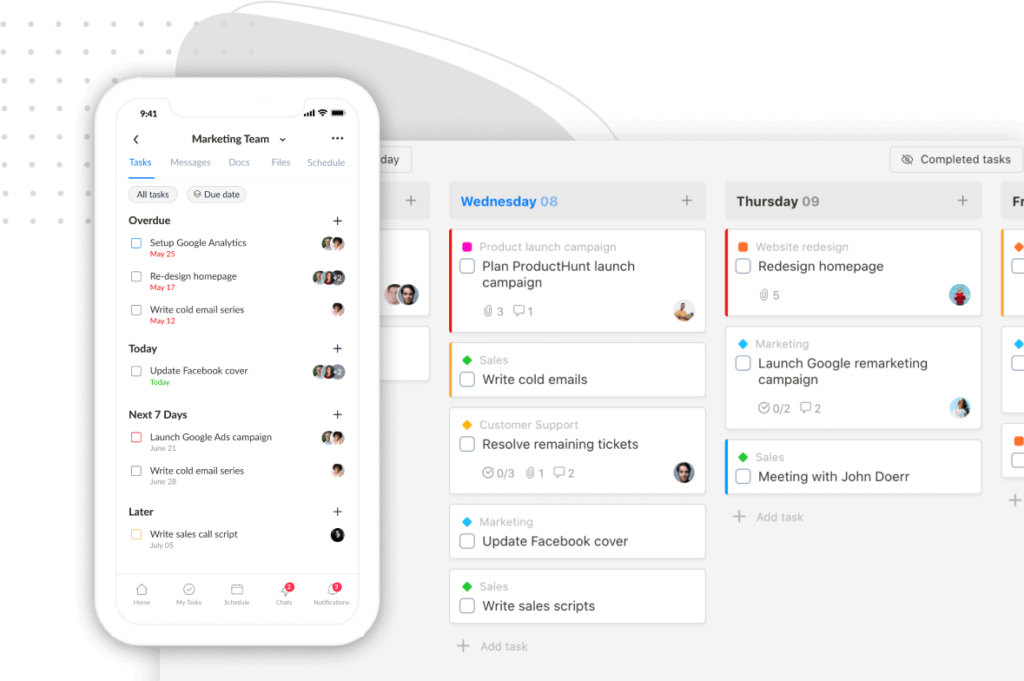How can I effectively assign tasks to people?
Why is it that despite assigning tasks, some groups reach peak productivity and project success, while others grapple with conflicts and burnout?
And how can I address and solve issues related to task assignment?
In this article, we’ll provide answers to all of these questions.
Ready to elevate your task assignment skills and boost your project success? Let’s dive right in!
I. Assigning Tasks: Quick Overview
1. What is task assigning?
Task assigning is the process of allocating specific duties to team members to achieve a common goal.
2. Why is assigning tasks to team members important?
Effective task assigning is crucial for achieving team goals and maintaining productivity because it improves:
- Fair workload distribution.
- Resource efficiency.
- Seamless team collaboration
- Simplifying project progress tracking.
There’s more.
As everyone knows their role, responsibilities, and how their work contributes to the bigger picture, they feel less confused and more accountable for their assigned task.
II. How to assign tasks effectively in a project?
Below are the best strategies, practices, and tips for assigning tasks to others effectively.
Stage 1: Before assigning tasks
- Understand the project & your team members
Ensure you get a clear understanding of:
- Project’s objectives, scope, desired outcomes, and any deadlines.
- Team members’ skills, strengths, weaknesses, and preferences.
This step allows you to match the right tasks with the right team member, which helps allocate tasks efficiently, increase productivity, and maximize project success.
- Break down the project into individual tasks
Follow these steps:
- Identify major components of the project based on its goals.
- Break components into smaller tasks.
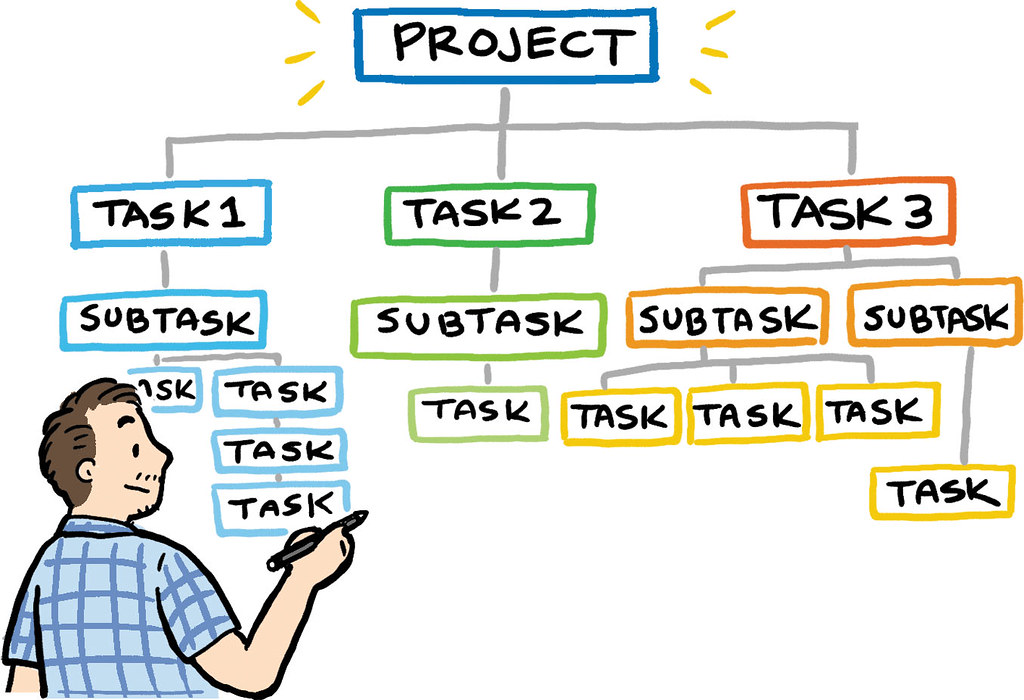
This makes it easier for managers to allocate responsibilities and track progress while helping team members better grasp the overall process.
- Prioritize tasks
Prioritize tasks based on 3 factors: 1) urgency, 2) importance, and 3) complexity. Here’s how:
- Identify time-sensitive tasks.
- Address tasks contribute to your long-term goals and should not be neglected.
- Categorize tasks based on difficulty levels, and time and resources required.
- Create a priority list of tasks based on the combination of all three criteria.
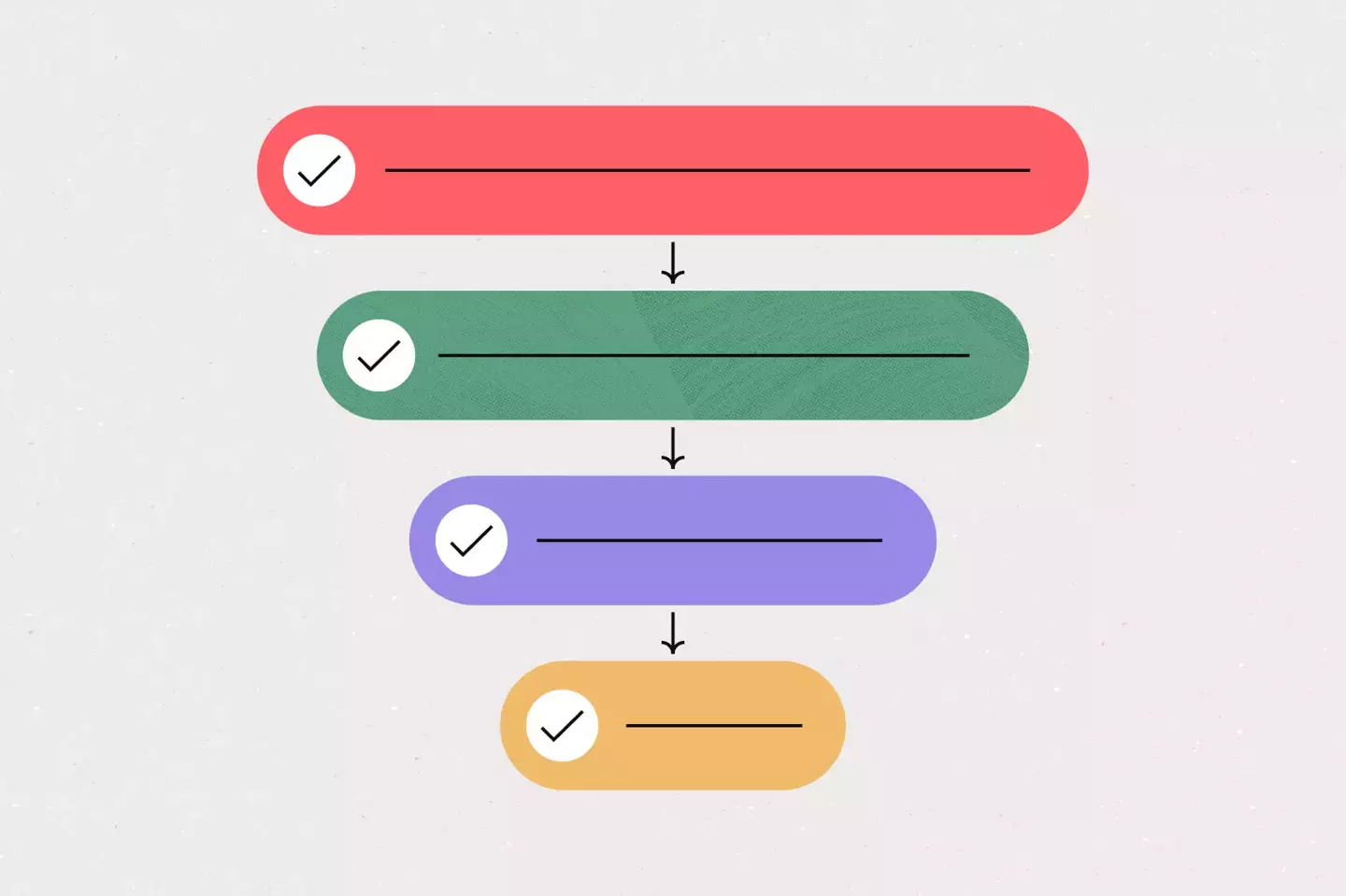
This valuable step helps managers make informed decisions on which tasks to tackle first and find the right people to work on each task.
Stage 2: While assigning employee tasks
- Match the right person to the right task
Assign tasks to the most qualified people.
Start by allocating high-priority tasks to the first available person with the matching expertise. Schedule low-priority tasks.
Straightforward tasks can be assigned to less experienced members, while complex tasks may be given to those with advanced skills.
Note:
- Be mindful of your team’s availability.
- Set realistic deadlines. Ensure to give members sufficient time to complete their assigned task.
- If someone shows interest in a particular task, consider assigning it to them.
If you know your employees well enough, then make a list of dependable people who are ready to take on a little more duties.
Give them low-priority yet important tasks with authority.
- Communication

To avoid disputes, constant clarification, or errors, it’s important to help your team members understand:
- Project’s goals, desired outcomes, and deadlines.
- Tasks’ requirements and priorities, plus how they contribute to the overall project’s success.
- Who is responsible for which task and what is expected of them.
Tips: Use clear and concise language when communicating. Encourage employees to ask questions and seek clarification on the project and their assigned tasks.
Stage 3: After assigning tasks
- Monitor Progress & Offer Help
Check-in with team members regularly to see how they are doing and if they need any help.
Encourage them to open up and transparently communicate their concerns and challenges.
On your side as a team leader or project manager, be available to offer assistance if they encounter challenges.
This helps resolve issues and improve the task assignment process.
- Provide Necessary Resources
Ensure that team members have the necessary resources, tools, and information for their task completion.
Stage 4: After the task/project is completed
- Reflect on Past Assignments
After each project or task, take time to reflect on what worked well, what didn’t, and where certain tasks weren’t up to par.
Address any issues and offer feedback on completed tasks. Use this feedback to refine your approach in future assignments.
Recognize and reward everyone’s efforts and contributions. This helps keep employees excited and motivated.
- Continuous Learning and Improvement
Invest in training and development opportunities for your team to enhance new skills and knowledge.
Extra tips for assigning tasks effectively:
- Use project management software to help you manage workload, make time estimates, performance reviews, etc.
- Be flexible. Things don’t always go according to plan, so be prepared to adjust your assignments as needed.
- Don’t be afraid to experiment. Try different approaches to see what works best for your team.
III. How to assign tasks in Upbase?
In this section, I’ll show you how a project management tool like Upbase helps simplify task assignments, improve morale, and increase outcomes.
Quick info:
- Upbase organizes and manages projects by lists.
- Members of a list can’t see and access other ones except those lists’ owners allow them to.
- Upbase offers unlimited free members, tasks, and storage.
Sign up for a free Upbase account here, follow this guide, and take your task assignment process to the next level.
1. Break down projects into smaller tasks
Create a new list:
- Hover over “Lists” on the left sidebar to open the dropdown menu.
- Select “List”
- Edit the list’s icon, color, name, and description. Then, add your employees.
Add new tasks to the list:
- Navigate to the Tasks module.
- Create and edit sections.
- Add tasks to sections by clicking “+” or “Add task”.
Optional:
Add new tasks via emails: Open the dropdown menu next to the list name, select “add tasks via emails”, and follow the instructions.

Add task details:
You can add specific instructions, priorities, deadlines, and other attributes to individual tasks and subtasks.
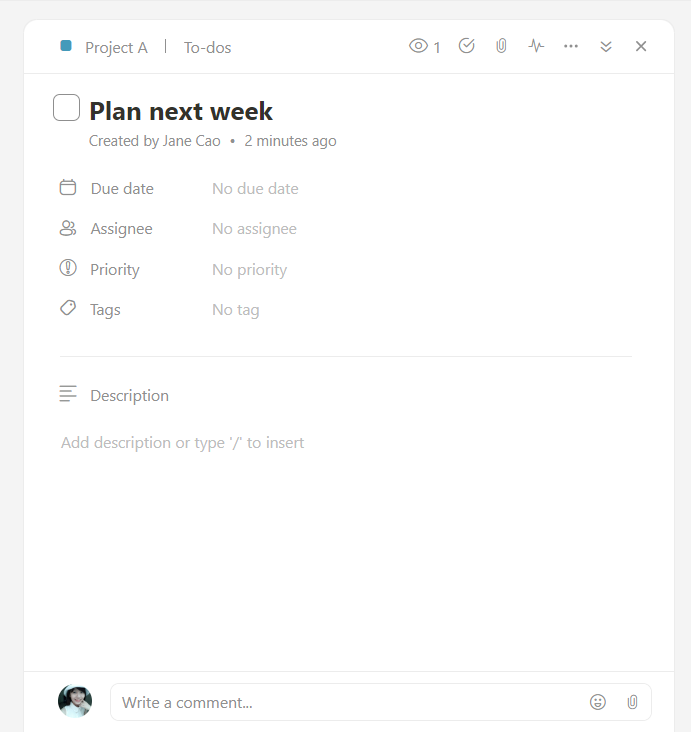
Keyboard shortcuts: Hover over a task card and press:
- “S” to set high priority
- “D” to open the Due date picker
- “C” to open the Tag picker
Upbase Tip: Use task tags to categorize tasks by urgency, importance, and complexity. This makes it easier to match the right tasks to people for later.
2. Assign tasks
Check your employee availability:
Go to the Members page, and click on the team member you’d to assess their workload.
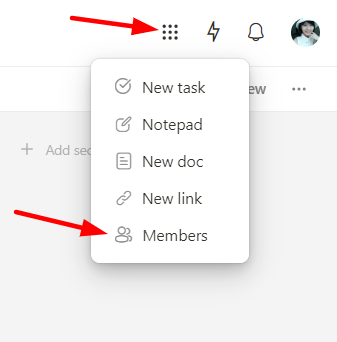
You’ll be driven to a separate page that shows that member’s assigned tasks, along with their due dates, priorities, etc. You can also filter tasks by one of these attributes.
Use this page to check each employee’s availability and identify who can complete additional tasks.
Assign tasks:
Open the desired task, click “Assignee”, and choose the right team member(s).

Keyboard shortcuts: Hover over the task and press “A” to open the Assignee picker. Press the space bar to assign yourself. This way makes assigning tasks easier and quicker!
If you want multiple people to work on a particular task, consider dividing it into subtasks, give time estimates for each, and then assign them to the right team member(s).
Communicate tasks:
Use the Messages and Chat modules to communicate with your team.
Messages is best suited to show the big picture, like project goals, desired outcomes, everyone’s duties, and how their work contributes to the whole.

Make use of the comment box to encourage everyone to ask questions and seek clarification about the project or their assigned tasks.
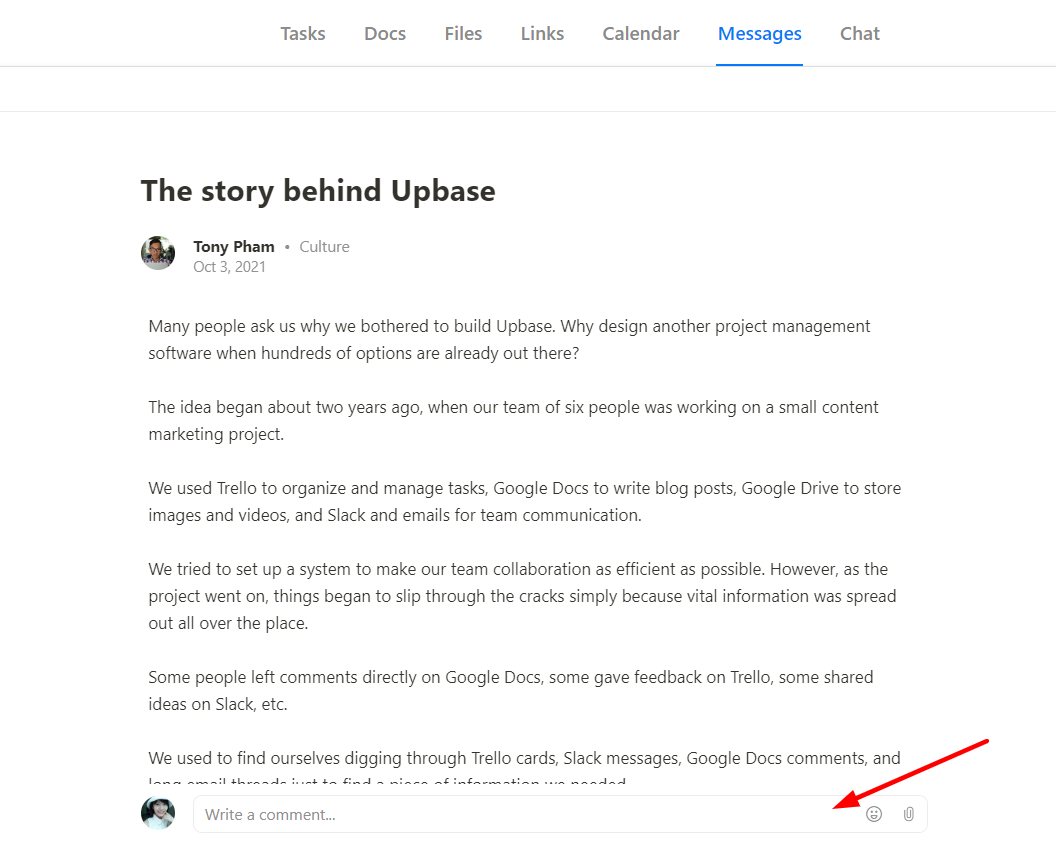
Chat supports both 1:1 chats and group chats. It’s perfect for quick discussions about issues, task deadlines, etc.
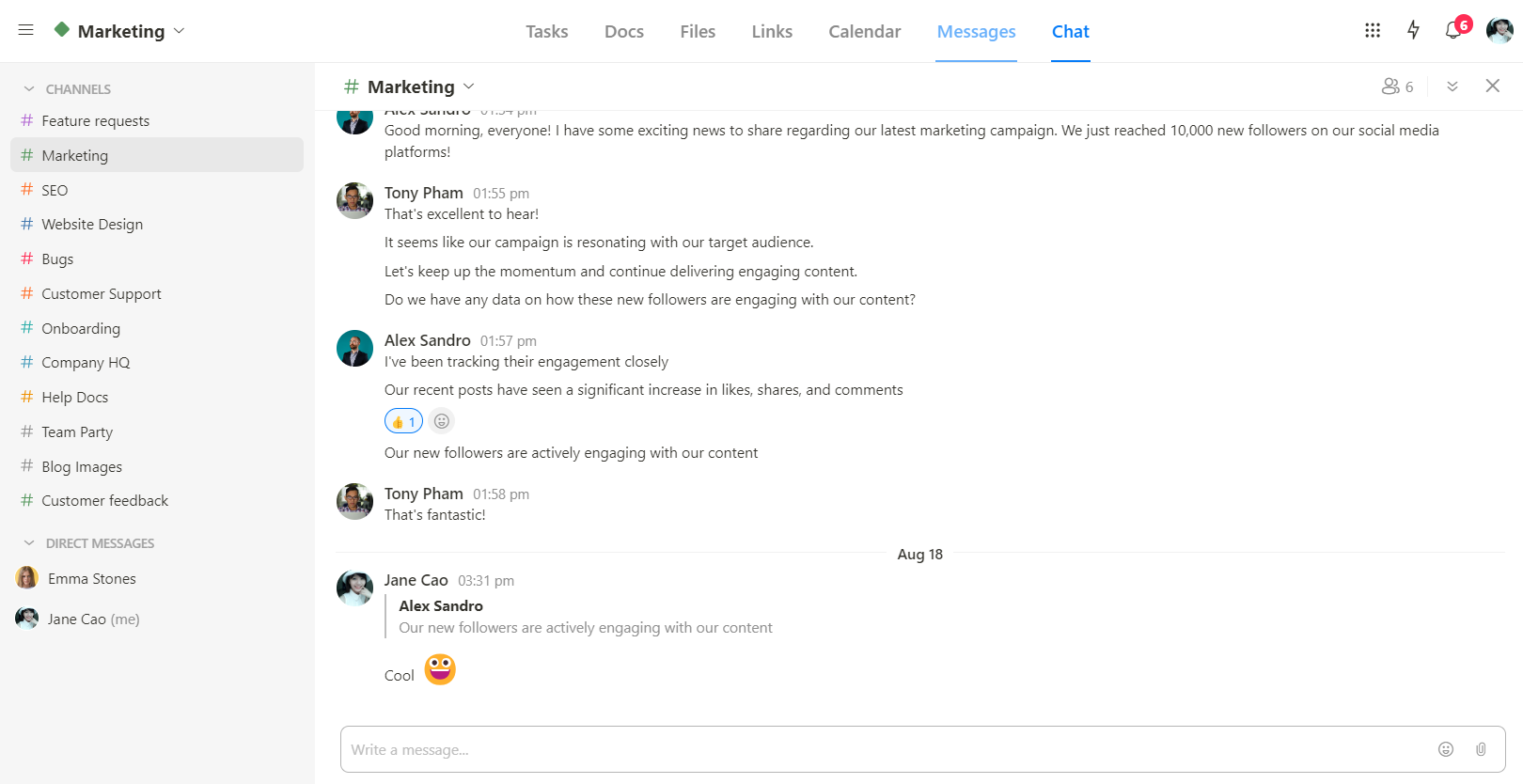
3. Track progress
Upbase offers an array of tools for project managers to track the workload of other employees.
To track a project’s progress:
From the Tasks module:
Here, you can view tasks in a List or Board format.
The List format provides an overview of tasks, deadlines, priorities, and employees working on them, while the Board visualizes the project’s progress.
Besides, you can group tasks by due date, priority, assignee, or section. View tasks filtered by one or multiple tags. Or create a custom filter.
From the Calendar module:
It shows all the scheduled tasks within a project by week or month. It also allows you to create a new task or reschedule overdue tasks.
To track the progress of all projects in a workspace:
Filters: In addition to filtering tasks within a project, you can create custom filters across multiple or all projects in a workspace.
Schedule: It functions similarly to the Calendar module. The two main differences are:
1) Schedule is to track the progress of tasks from all projects while Calendar is to track the progress of tasks within a project.
2) Schedule offers an additional view, named Daily Planner.
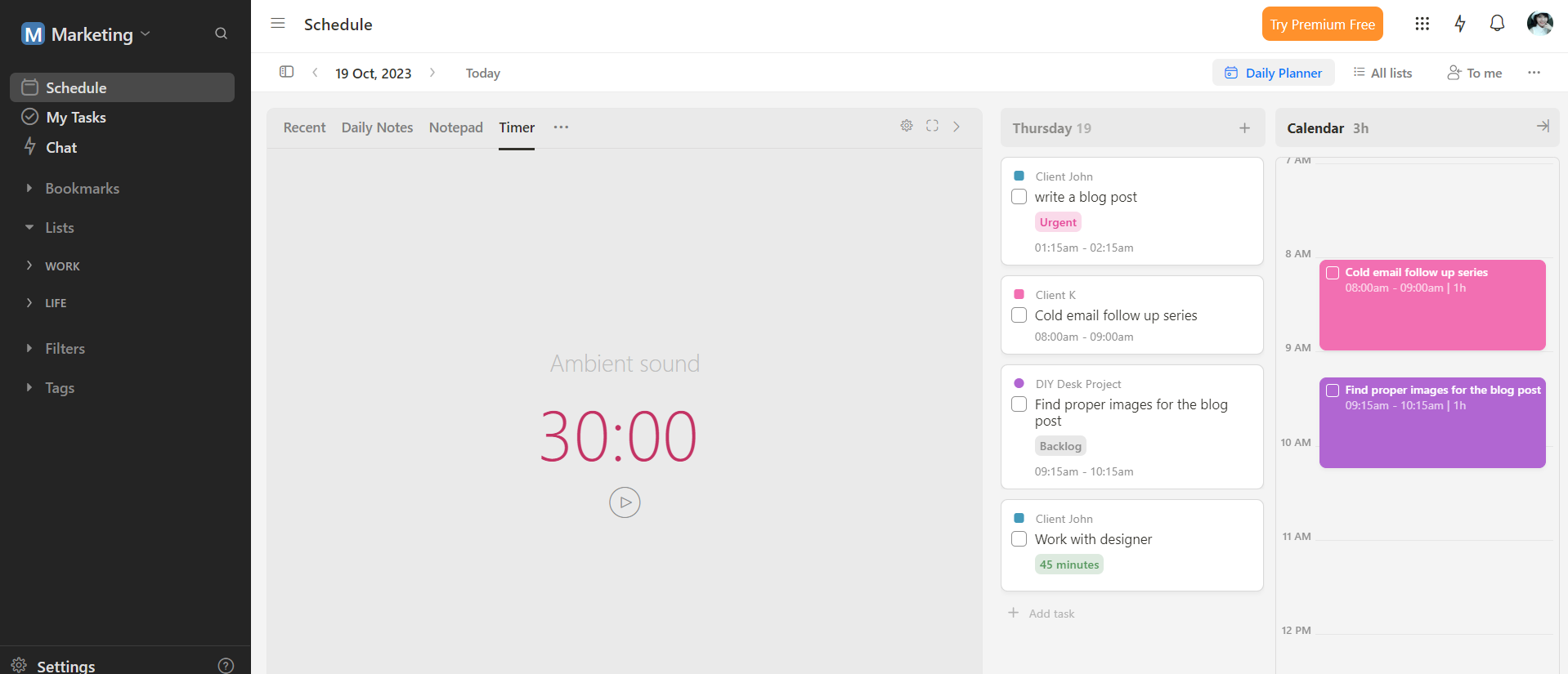
Other tools for progress tracking:
My Tasks: A private place where you can get an overview of all the tasks you create or tasks assigned to you.
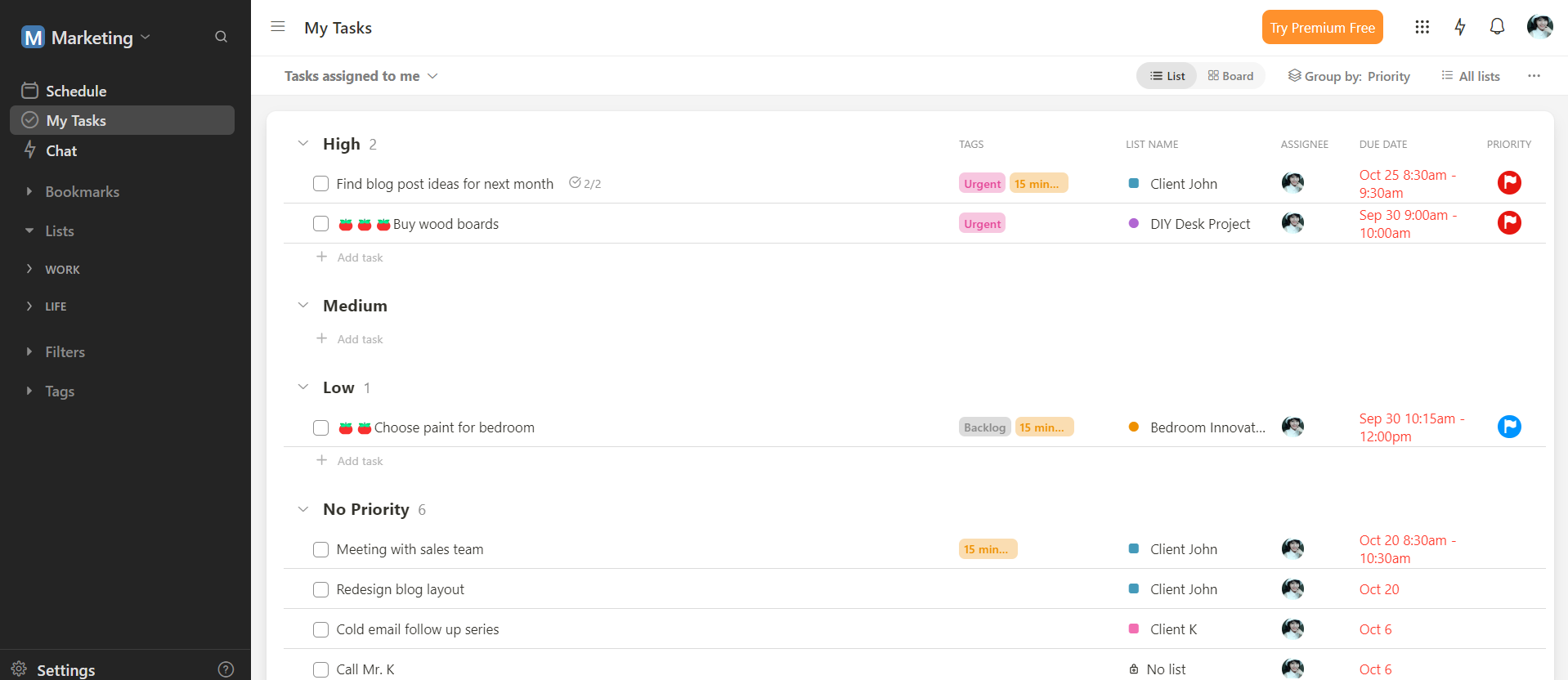
4. Encourage collaboration and provide support
Use Upbase’s Docs, Files, and Links to provide employees with resources, information, and tools they need to complete tasks.
These modules are available in each list, making it easy to manage project data separately. Plus, they all provide collaboration features like watchers and comment boxes.
- Docs: You can create native documents, share a doc’s public link, embed Google Docs, and organize documents by folders.
- Files: It allows you to upload/download files, manage file versions, embed Google Drive folders, and show files by Grid or Board view.

- Links: You can save URLs as cards, and then add descriptions, watchers, and comments.
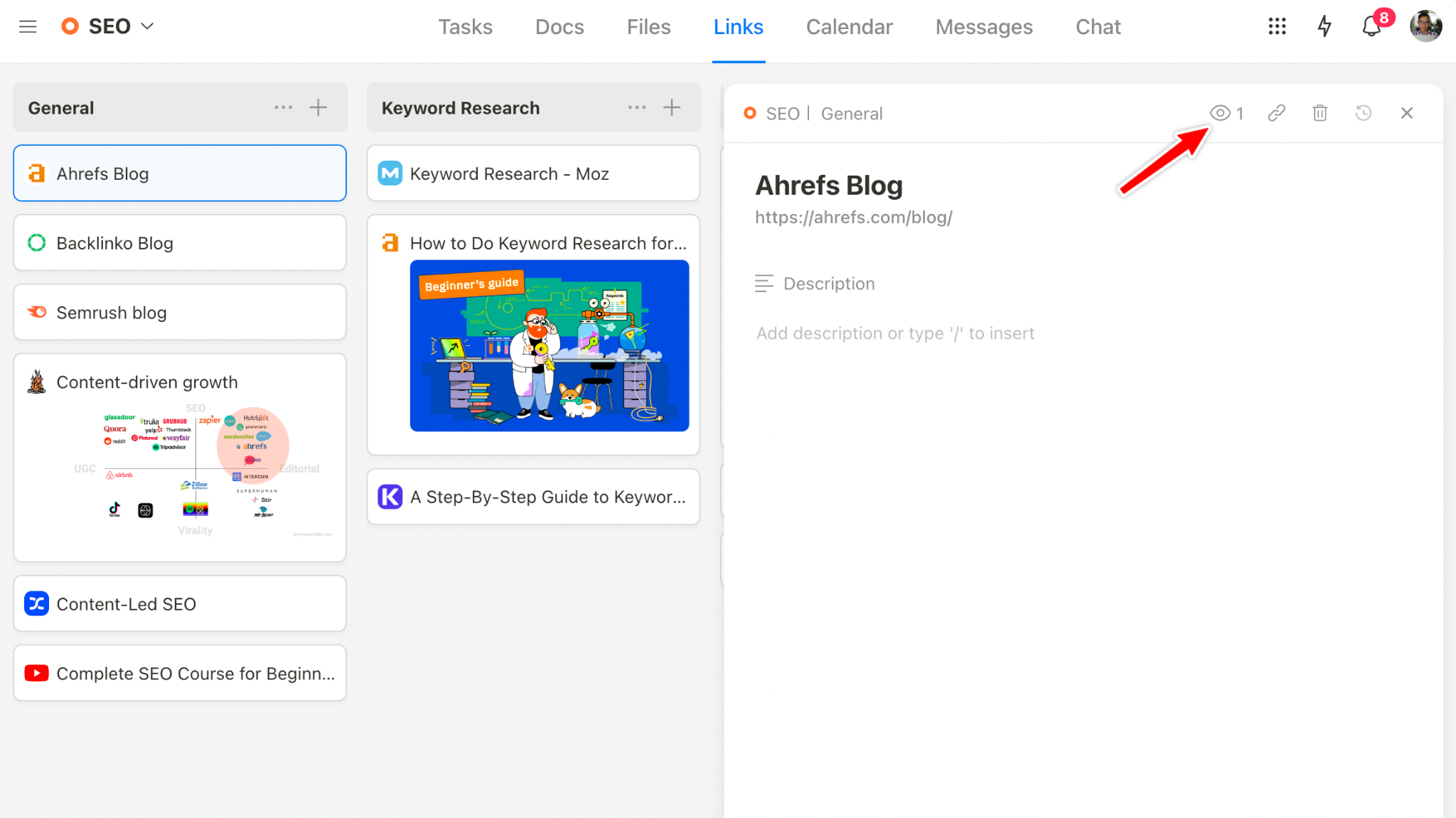
5. Providing feedback
On the Tasks module, you can create a section, named “Review”.
When a task is completed, the assignee will drag and drop it here. Then, you, as a project manager will leave feedback on it via the comment box.
So, why wait? Sign up for a free Upbase account now and experience it yourself.
IV. Common mistakes to avoid
For successful task assignment, remember to avoid these common mistakes:
1. Fear of Assigning Tasks
Some people, particularly new or inexperienced managers, may hesitate to allocate tasks to others due to concerns about:
- The quality of the work
- Fear of losing control
- Lack of trust in team members
This fear can hinder productivity and personal growth within a team or organization.
2. Lack of Clarity
This means that the instructions and details regarding a task are not transparent.
Team members may not have a clear understanding of what they are supposed to do, what the goals are, or what the expected outcomes should be.
This lack of clarity can lead to confusion and misunderstandings.
3. Poor Communication

Poor communication can contribute to misunderstandings and problems in task assignments, too.
However, it addresses different aspects of the overall process.
Poor communication means that there might be a lack of information sharing or ineffective communication methods. This could include:
- Not providing updates
- Failing to ask questions when something is unclear
- Not actively listening to others.
Even with clear instructions, if there’s poor communication, the information may not be conveyed effectively.
2. Overloading
Assigning too many tasks to a single person or team can overwhelm them and negatively impact the quality of their work. It’s crucial to distribute tasks evenly and consider each individual’s capacity.
3. Ignoring Skills and Strengths
Neglecting to match tasks with team members’ skills and strengths can result in subpar performance. Assign tasks based on individuals’ expertise and abilities to optimize results.
5. Micromanagement

Hovering over team members and scrutinizing every detail of their work can stifle creativity and motivation.
Trust your team to complete their tasks and provide support when needed.
6. Inflexibility
Being rigid in task assignments can prevent adaptation to changing circumstances or new information. It’s essential to remain open to adjustments and feedback.
8. Unrealistic Deadlines
Setting unattainable deadlines can put unnecessary pressure on your team and lead to a rushed and subpar outcome. Ensure that timelines are realistic and allow for unexpected delays.
10. Lack of Feedback
Forgetting to provide constructive feedback or failing to seek input from team members can hinder growth and improvement. Regularly discuss progress and provide guidance when necessary.
In summary:
Successful task assignment relies on clear communication, matching tasks to skills, flexibility, and a supportive, accountable, and feedback-driven environment.
Avoiding these common mistakes will help ensure that tasks are completed efficiently and effectively.
V. FAQs
1. What’s the difference between assigning and delegating tasks?
Task delegation means you give someone the authority to make decisions and complete tasks independently without constant supervision.
Task allocation, on the other hand, means you assign specific duties to someone, often with clear instructions, while retaining overall control.
A delegated task gives the team member more freedom to make decisions and determine how to produce the desired results. An assigned task is more limited because it’s based on instructions and under supervision.
In short, delegating tasks typically involves a higher degree of trust and empowerment than allocating tasks.
2. What’s the difference between tasks and subtasks?
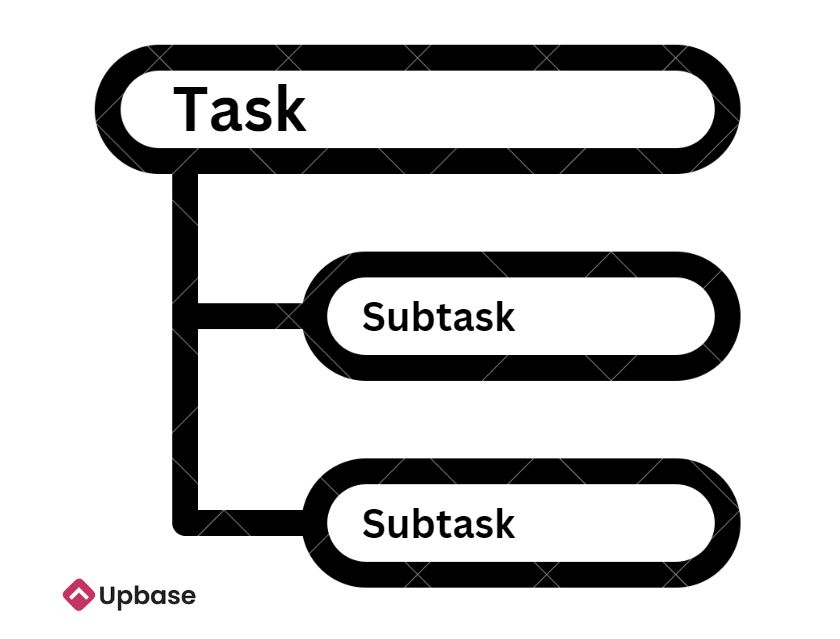
Tasks are generally larger, more significant activities that need to be completed, while subtasks are smaller, specific components or steps that contribute to the completion of a task.
Subtasks are often part of a broader task and help break it down into manageable pieces.
3. Who is the person assigned to a task?
The person assigned to a task is called an “assignee”. They’re responsible for completing that specific job or duty.
4. Who should you delegate a task to?
Delegate a task to the person best suited for it based on their skills, expertise, and availability.
Choose someone who can complete the task effectively and efficiently, taking into account their experience and workload.
5. What is the best way to assign tasks to team members?
The best way to assign tasks to others is by considering each member’s strengths, skills, and workload capacity, and aligning tasks with their expertise and availability.
6. Why is it important to assign tasks to your team members?
Assigning tasks to team members is crucial because it ensures clarity, accountability, and efficiency in achieving goals.
It helps prevent duplication of efforts, enables better time management, and allows team members to focus on their strengths, ultimately leading to successful project completion.
7. How do you politely assign a task?
To politely assign a task, you can follow these steps:
- Start with a friendly greeting.
- Clearly state the task and its importance.
- Ask if the person is available and willing to take on the task.
- Offer any necessary information or resources.
- Express appreciation for their help.
8. How do short-term goals differ from long-term goals?
Short-term goals are specific, achievable objectives that you aim to accomplish soon, typically within days, weeks, or months.
Long-term goals are broader, more substantial objectives that you work towards over an extended period, often spanning years.
Short-term goals are like stepping stones to reach long-term goals.
